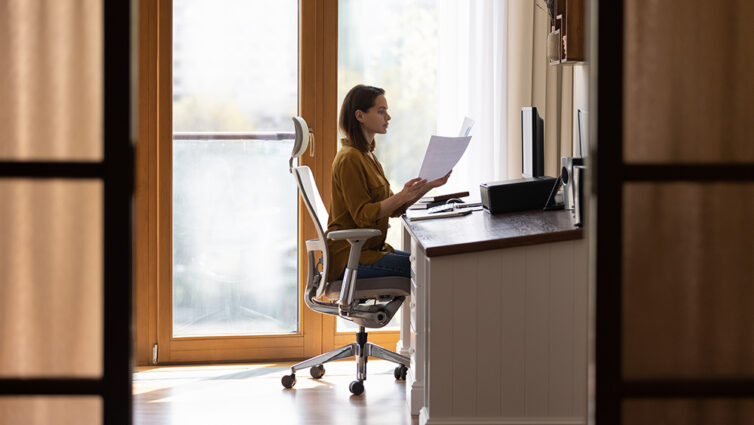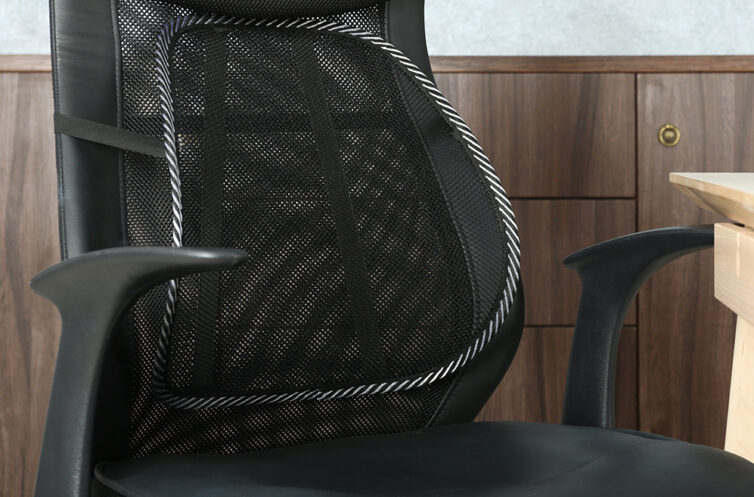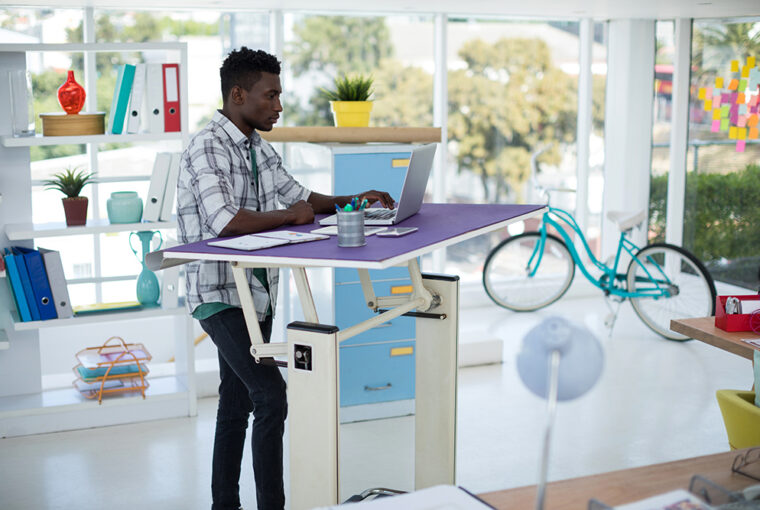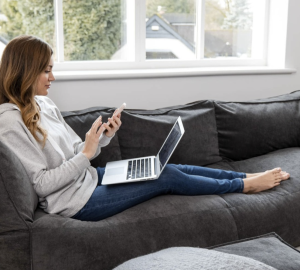There’s lots of evidence to show that working from home is great for our mental wellbeing – allowing people to ditch long commutes and expensive supermarket lunches in favour for more time with the family and the comforts of your own kitchen.
Unfortunately, it’s not always good for your physical health. While office spaces have usually been looked over by the company’s health and safety team – or perhaps even an external consultant – a lot of us are guilty of throwing together work from home spaces without giving much thought to good posture or ergonomic design.
But all is not lost! You can still work from home guilt free by incorporating a few of these simple tips into your home office.
Set your desk and chair to the right height
Let’s start with the basics: sitting at the kitchen table or perching on the sofa with your laptop on your knees is a recipe for bad posture, leading to back and neck pain and potential injury.

If you have the space and budget, a proper desk and adjustable chair will be two of the best investments you can make, making it easy to set your workstation to the correct height. As a guide, your screen should be at a comfortable eye level so that you don’t have to crane your neck as you work.
This is particularly important if you’re working from home most of the time – but even for those who only work from home occasionally, you should still give some thought to your seating arrangements. A proper office chair is going to provide a lot more back support than a kitchen stool. Even budget-friendly chairs will help you find the correct posture, and you can use a cushion or pillow to improve lower back support.
Find ways to encourage movement
Moving your body and stretching your legs is going to be vital for keeping the blood flowing. Over time, lack of movement causes more than the occasional pins and needles, leading to potential issues such as nerve damage and blood clots.

Choosing equipment that encourages you to move more is one way to combat these problems. We love the option of a standing desk which can be adjusted throughout the workday, allowing you to raise the height every couple of hours and work standing up. This is incredibly effective not only for preventing back pain and musculoskeletal disorders, but also for improving concentration and giving you a much-needed boost of energy throughout the day.
Another simple trick is setting a regular timer or alarm to go off and remind you to get up and stretch your legs. Taking regular breaks to fill up your water bottle or put the kettle on is a great way to stay active. So if you’re the sort of person who can easily lose track of the time when you’re hard at work, an alarm can help to pull you out of the zone.
Invest in accessories that support key parts of the body
Back supports that attach to your chair and wrist support cushions are two cost-effective accessories that can easily be added to your home office. These allow you to give targeted support to parts of the body that can suffer the most strain throughout the working day.
If you have particular problems with circulation in your feet and legs, then you could also consider wearing compression socks as part of your homeworking wardrobe. By gently squeezing your feet and lower legs, they help to keep the blood flowing, and can really help counter the impact of a sedentary lifestyle.
Don’t rely on your laptop
Don’t worry, we’re not about to suggest investing in a whole new home PC setup. However, if you can augment your laptop with a few simple bits of kit, you can really improve your overall working experience.

First of all, a laptop stand will bring the screen up to eye height – addressing the neck strain that we mentioned earlier. Of course, once you’ve got your laptop propped up on a stand, you’re not going to want to stretch to type or use the trackpad. So it’s also a good idea to add a simple USB mouse and keyboard. This will allow you to position your keyboard and mouse so that they’re in a comfortable position for your hands and arms. It will also allow you to take advantage of a wrist support cushion.
Get help from your company
Most businesses see the benefit of having healthy staff, so they will often offer free desk assessments and ergonomic equipment. In many cases, these desk assessments can be conducted over Zoom for remote workers.

While we haven’t heard of many companies buying desks or office chairs, there is often some budget for things like back supports or laptop stands. It’s always worth checking in with your manager or HR department. If this type of support isn’t currently available, you could consider suggesting it as a future perk.
Whether your employer will subsidise the costs or not, we’d rate all of these tips as a worthy investment. Working from home should be something you can enjoy and appreciate. So take the time to create a space that makes you feel comfortable and productive, and that helps protect your physical health.









